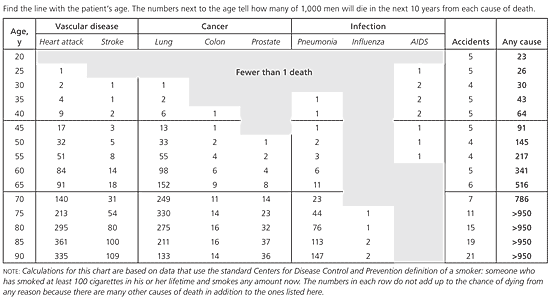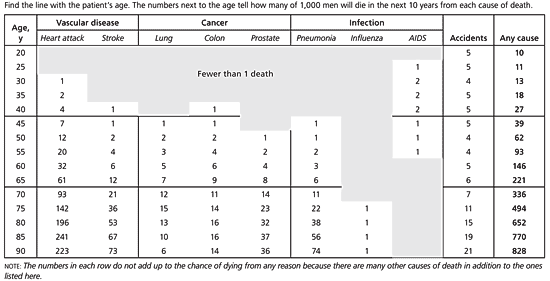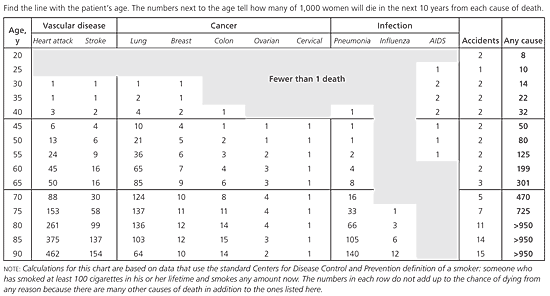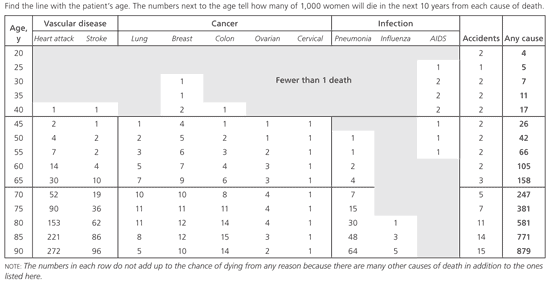
Am Fam Physician. 2007;75(6):885-887
Clinical Question
What is a patient's risk of dying from vascular disease, cancer, infection, an accident, or any cause within the next 10 years?
Evidence Summary
Accurate estimates of patient risk or prognosis can be helpful to a primary care physician. For example, patients may resist participation in a screening program because they underestimate their risk. Also, women may overestimate their risk of breast cancer1 and downplay other important health risks. Comparing the risk of cancer or heart disease between smokers and nonsmokers can be useful when counseling patients about smoking cessation.
Research has shown that information about risk can be clearly communicated to patients using absolute numbers and frequencies (e.g., 12 in 1,000 patients), whereas percentages, probabilities, and likelihood ratios should be avoided.2 A group of researchers has developed a set of charts (Figures 1 through 43) to help physicians communicate the 10-year mortality risk from vascular disease, cancer, infection, an accident, and any cause.3 The charts are separated based on sex and smoking status. Mortality rates were calculated using data from the 1998 National Center for Health Statistics Multiple Cause of Death Public Use File.4




Applying the Evidence
A 60-year-old female smoker is extremely worried about her risk of breast cancer because two of her friends have been diagnosed with the disease in the past 10 years. She has no risk factors for breast cancer, but she has asked you to refer her for breast magnetic resonance imaging (she read that this was the latest and most accurate screening test). What is the best way to convince her that smoking cessation to prevent lung cancer would be more beneficial to her than breast cancer screening?
Answer: You determine that her risk of dying from breast cancer in the next 10 years is seven in 1,000. However, her risk of dying from lung cancer in that same period is 65 in 1,000, compared with five in 1,000 if she were a never smoker. Similarly, her risk of dying from heart disease or stroke in the next 10 years is 61 in 1,000, compared with 18 in 1,000 if she were a never smoker. Her overall risk of dying in the next 10 years is nearly twice as high as it would be if she were a never smoker (199 versus 105 in 1,000). The risk for smokers who quit is presumably somewhere between that for current and never smokers.